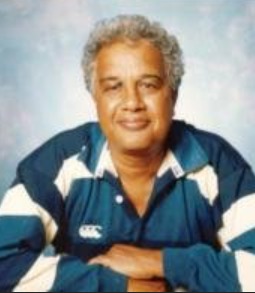Siri Gunasinghe’s Sinhala Poems in English — Just Three-by Michael Roberts

Source:Thuppahis

Translated by Ranjini Obeyesekere, in The Island, 25 February 2015
- The Water Buffalo
My beard on fire
in haste, I was running, running down in the dawn,
bearing the burdens of life
all on my back;
at the edge of the road, in a large clump of grass
like a fat merchant spread eagled on his easy-chair
I saw you lie.
Both eyes closed;
and at the earth-shattering
battering of my feet
you did not even start.
Ears turned down;
my sky-thundering
lightning-like haste
did not surprise you.
Teeth unbrushed
face unwashed,
in the mountain’s moist lap
of lush marsh grass
mud splashed.
What if, like you
I too
could laze?
Tell me my buffalo,
you who can’t even stand
yes you, Reverend Sir!
Are you observing rites,
contemplating the impermanence of life,
belching with both eyes closed?
Or do you count beads
with each slow puff
of dilated nostril?
Like eye-flies slowly crawling
from a partly opened flower
are the thoughts that seem to teem
from those faintly twitching eyes;
what secret do they hold?
Head half-lifted up
spit drooling, lips that chap
like a toothless mouth chewing betel
all alone;
a lazy past was yours.
The full weight of earth and sky
bundled in one load
like a wisp of a cotton flake
you bear
on those handsome, upturned horns.
How do you do it
O buffalo?
You do not know of yesterday
nor have yet come to know today.
Tomorrow you know nothing of.
Undying time alone is yours.
You are my only idol
all in stone.
++++
- A Memorial
Forsaking me
leaving my limbs death-stiff
she left – disappeared –
went away;
and I became a prey
to a flock of wild-beast memories
a bloody prey.
The thick dark of time shrouds
but in the flickering light from my heart
her body glows
gleams before my eyes.
Like a cool streak of water
between rough rocks
she flows
soaking my heart.
The colour of clear skies is her.
The texture of trees and flowers is she.
All the colors of the world are her.
I struggle hard to shut her out
She lurks in the very lashes of my eyes.
The tough dry skin of forgetfulness
splits apart —
your eyes peer at me dear one.
I still see the trembling of your lips
as you embrace me.
The only happiness life has,
the one lovely object the world holds,
is she – companion of my loneliness –
vanished now;
the only woman who shared my loneliness.
3. Dirty Dishwater
Man’s mind is a kitchen
Learning, it’s dishwater.
I grovel, lapping it up.
Black crows flock
to drive me away.
It is not easy to escape.
Dishwater stagnates in the drain
with stale leftovers
scraped off broken plates.
No salt or flavor in it
nothing to fill one up.
Hurt by a hurled coconut shell
leg-lifted
yelping
I still cannot tear myself away
from that drain.
All that gave life
to a lifeless existence –
dishwater.
The only flavour
in a flavorless life –
stale food.
***
ALSO SEE Candy Hunt: “When the Translator walks a Tightrope,” Daily News, 2 March 2015
 If you could set an elephant walk a tightrope, I can assure you can handle a poetry translation. This is the general idea that people have on translating poetry. Although I have not specialized circus tricks, I have translated a few poems and they have been published in many channels. But every time I read them, I feel that I would have done better. Ability to translate is something that grows within you day by day I conclude. But I know that translation skill is not a synonym for maturity.
If you could set an elephant walk a tightrope, I can assure you can handle a poetry translation. This is the general idea that people have on translating poetry. Although I have not specialized circus tricks, I have translated a few poems and they have been published in many channels. But every time I read them, I feel that I would have done better. Ability to translate is something that grows within you day by day I conclude. But I know that translation skill is not a synonym for maturity.
Language is the central subject of any discussion about translation. However, there are certain elements involved in the process of translation which go beyond this conventional area.
This is especially true for literary translation in general and translation of poetry in particular. Literary translation is a translational species in itself, but it differs in many important respects from the kind of translation practiced in a language class. On the one hand, literary translation involves a good deal of interpretation about intent and effect. On the other hand, the literary translator is often not as much interested in literal ‘transliteration’ as in finding a corollary mood, tone, voice, sound, response, and so forth.
As once a prominent scholar in translation studies, Richard Jackson highlighted, a translator must see to it that what he writes is similar, but not the very same; and the similarity, moreover, should not be like that of a painting or statue to the person represented, but rather like that of a son to a father, where there is often a great difference in the features and body shape, yet after all there is a shadowy something—akin to what the painters call one’s air—hovering about the face, and especially the eyes, out of which there grows a likeness.
We writers, too, must see to it that along with the similarity there is a large measure of dissimilarity; and furthermore such likeness as there is must be elusive, something that it is impossible to seize except by a sort of still-hunt, a quality to be felt rather than defined. We must write just as the bees make honey, not keeping the flowers but turning them into a sweetness of our own, blending many different flavors into one, which shall be unlike them all, and better. So, contrary to some critics’ argument that poetry “loses” in translation or poetry is “untranslatable”, there are others with the opposite standpoint that it can be preserved, illustrated and illuminated if a good job is done, because poetry is in large part found again and re-painted by the translator. Of course, many of the original poetical touches of color cannot be transposed and they must be arranged; yet these new arrangements may be even more luminous than the original. Thus a good translation discovers the “dynamics” of poetry, if not necessarily its “mechanics”. The point to be noted here is that as Peter Newmark states, literary translation is “…the most testing type of translation. It can further be claimed that translation of poetry is the acid test showing the challenging nature of the task.
In the discussion on poetry translation, I should mention the glowing women involved in Sinhalese poetry translation. Dr Lakshmi De Silva published a collection of Sinhalese poetry including Seegiri Graffiti. Dr Ranjani Obeyesekere translated ‘Yasodarawatha’ and Dr Hemamali Gunasinghe did various poems including many of Cumaratunga Munidasa’s poetry. As a teacher of translation studies these works immensely help me to deliver my message to the students when I teach. They have contributed in showcasing a part of our exquisite cultural mosaic.








